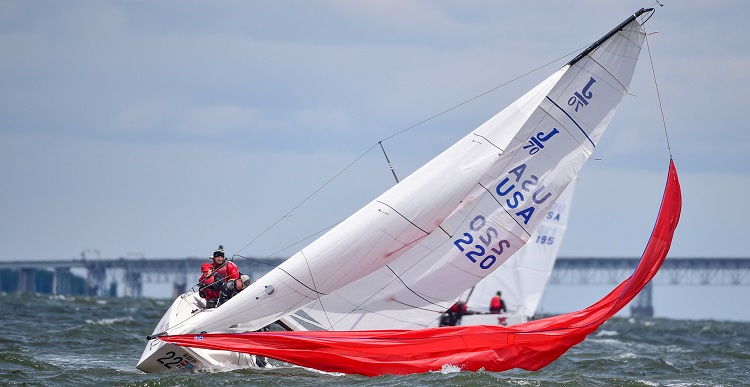As we draw to the end of the inaugural SpinSheet Fitness Week, we thought that it might make some sense to pull all of the elements together and provide some final advice.
We looked at four different areas of fitness that are important to the performance of a sailor:
- Aerobic Fitness
- Lessen that burning in your lungs/throat during manuevers, lower muscle fatigue, and bring that recharge time on the rail down.
- Core Strength
- Charge up all of your movements, lessen/prevent lower back pain, and enhance your balance and stability.
- Stretching/Range of Motion
- Get your Gumbi on. Lessen soreness from activity, increase range of motion, and reduce the risk of injuries specific to muscles, ligaments, and tendons.
- Overall Strength
- Build up muscles to meet all of the physical demands of your job on the boat.
And if you were to work on just one of these elements prior to the season, you’d certainly find yourself better off during and after a race. But in forming a training regimen that incorporates each of these areas, you’ll be in a vastly better place by the time the season starts.

If you were to search through memories of regattas past, especially the breezy ones, you’d likely have no trouble finding examples of days where you just didn’t have much left in the tank, felt achy and sore, or just couldn’t quite maintain peak performance through the entire day. We’ve all been there. And while the shortfall in performance might have had no effect on the outcome of your day, it might next time around. Being fatigued also affects your concentration and your ability to mentally participate in the race.
There’s also a safety risk to not being fully fit while on a boat. We take for granted the physics bullfight that is occuring when we’re racing -- boats weighing multiple tons, with blocks and lines that are loaded in the thousands of pounds, operating in close quarters without brakes. You always need to have the strength and fitness to perform your job and, in the worst case scenario, put yourself into a safe position on the boat when it goes totally sideways.

How you choose to bring all of these elements together in your daily life is up to you -- a lot of it depends on how much time each day you can commit to your fitness. Ideally you can commit to:
- Three days a week to aerobic fitness.
- Two days week of core strength and strength training.
- Stretching can be incorporated most days as it will help to reduce any soreness that occurs from your other workouts.
- Take at least one day off completely and leave 48 hours between strength training workouts to give your muscles time for recovery.
Some final parting thoughts:
- Keep track of your workouts. There are apps for your phone, but there’s also just the trusty pen/paper. Use the data that you collect to carefully tweak and increase your workouts.
- Don’t rush success. If you feel good after two sessions of a particular workout, increase reps/distance slowly. It is amazing how even small additions to your workout can change how your body feels.
- Consistency is the key to everything. Stick with it. You’ll have difficult days, but just like difficult races, your ability to move past and put them in the rearview mirror will be the key to your overall success.
Good luck!




